From the rose fields of Kannauj to the jars on our table, gulkand takes love and labour to make. A trip to Khadariyapur in Uttar Pradesh reveals the story of paan’s indispensable ingredient that’s now a standalone wellness eat
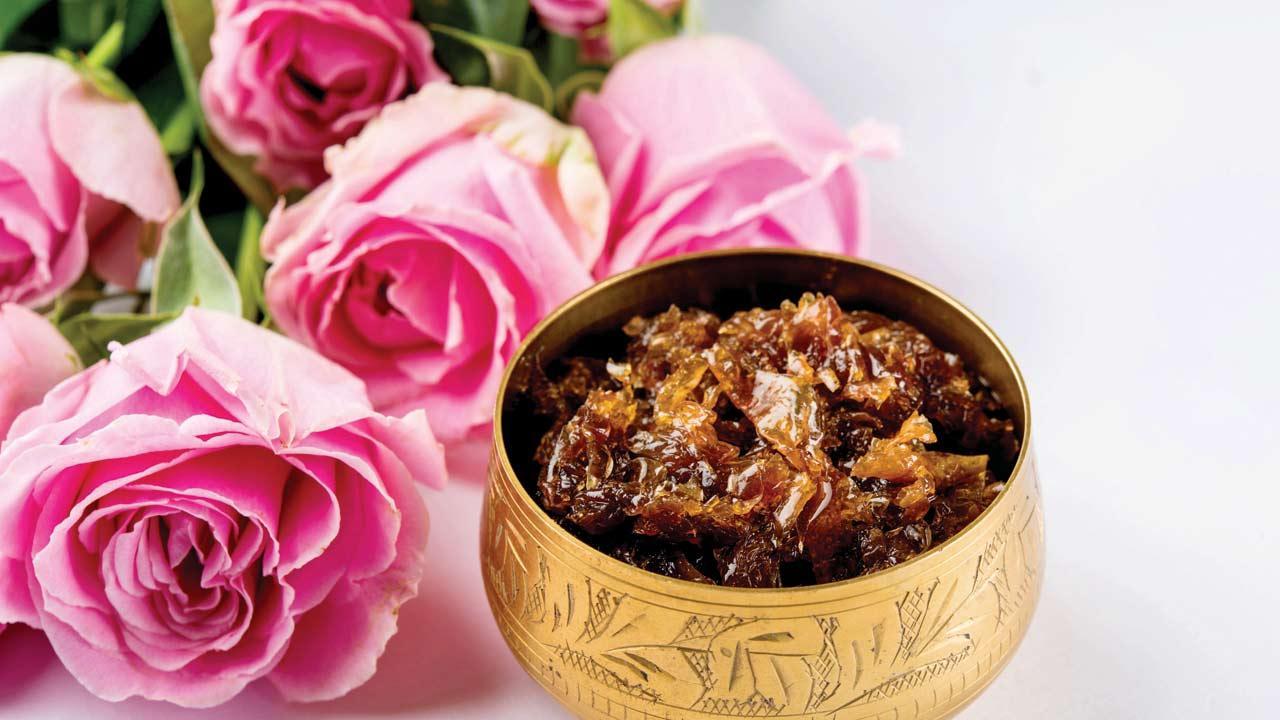
Representative Image
You are in time to witness the most beautiful season of roses,” Shashwat Dubey of Komal Ram Prem Narain, a major producer of gulkand, tells us over the telephone. We are in Lucknow for a summer break., and close to Kanauj, where the best gulkand comes from. This fourth-generation entrepreneur is a 26-year-old commerce graduate from Kanpur University, and happy to share stories about the making of gulkand, the natural way, something he has watched since he was a boy. “We call it the Chaitri gulab [spring rose], when the flowers are in full bloom, from March to May, coinciding with Chaitra ritu [spring] of the Indian calendar,” he says.
ADVERTISEMENT
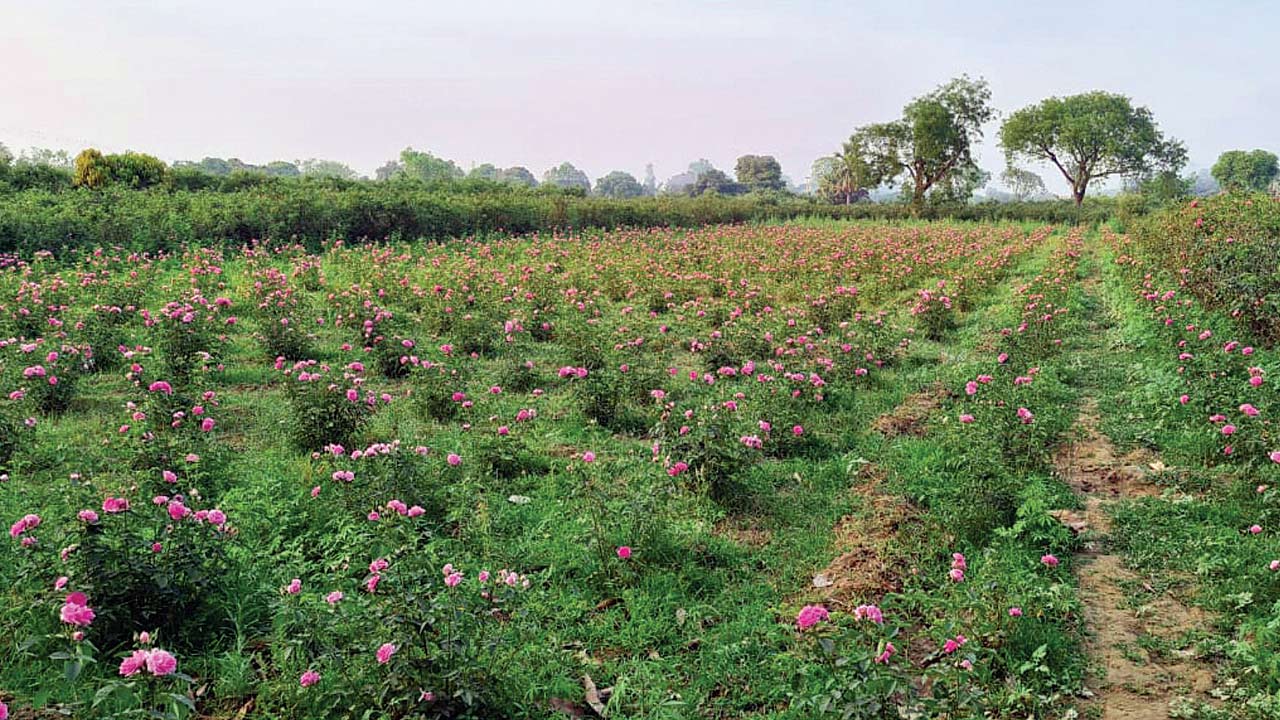
The next thing we know, we are on the Lucknow-Agra expressway at 5 am the next day. Shashwat arrives on his bike and meets us at the bus adda at 7 am to help navigate the narrow by-lanes, lined with burnt-brick structures on either side. The lanes are ‘kacchi sadak’ laden with mud and cow dung. We aren’t the first ones here. With more than 200 local perfume distilleries—most with a rich legacy—some of the world’s best perfumers have walked the lanes to get their hands on the famous Kannauj attar.
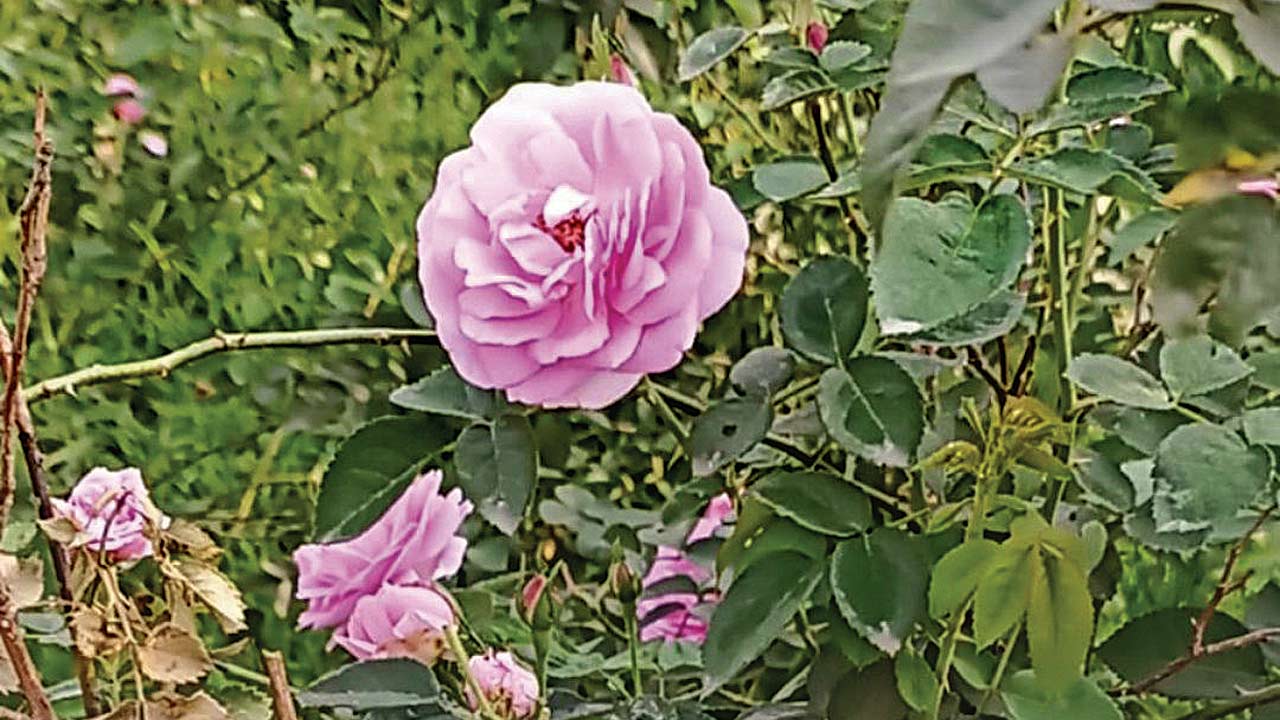
Locally called Chiniya gulab, the Damascus or Damask rose is known for its heady fragrance, and antioxidant, antibacterial and antimicrobial properties. It is prized for its balanced content of geraniol and rhodinol, benefitting from the fertile alluvial soil here on the banks of the Ganga. For more than four centuries, this variety of rose is used to make rose attar, ruh (essential oil), rosewater, and of course, gulkand. It’s poetic beauty has been referenced by Shakespeare (Twelfth Night and Sonnet 130), Syrian poet Nizar Qabbani and the English poet Thomas River.
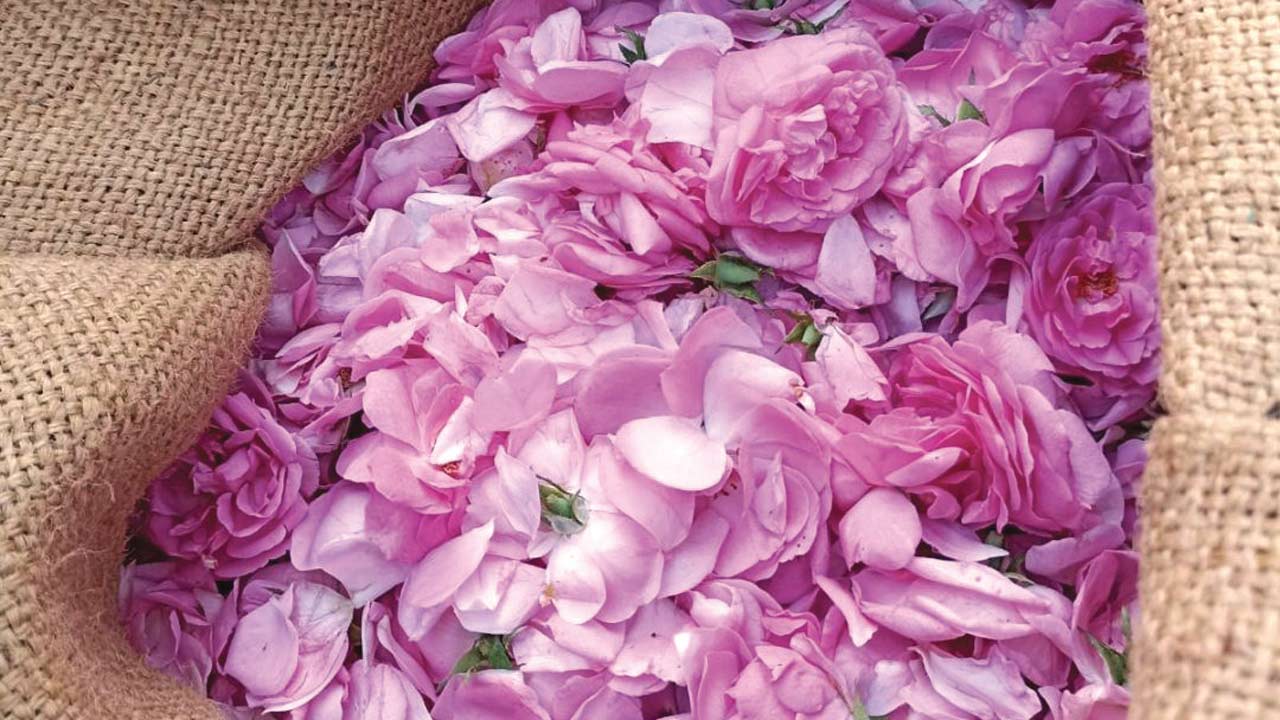
As we approach the fields at Khadariyapur, we roll down the windows to take in the sight of a carpet of pink as far as the eyes can see. The air is rich with the smooth scent of the Chiniya and the earth. Cannabis grows here in the wild and rows of mango trees are laden with flowers. As the sun’s rays, fall gently on the fragrant foliage, it feels hypnotic.
We stop by at Kamal Saini’s plantation as he goes in and out of the thorny shrubs like PAC-MAN, coming out unscathed each time. Saini has been plucking roses with his bare hands for years, even though he hires manpower to work on 10 acres of rose farms. He knows no other way. “Only fully blossomed flowers are picked and plucked at an angle that doesn’t hurt. It takes years of practice to be able to do this,” he says nonchalantly, plucking the last lot for the day, circling the haphazardly planted shrubs—some as tall as a one-storied building.

The roses are tossed into a jute sack slung around his waist. Tightly packing them in a bigger sack, he ferries the harvest back to Kannauj on his trusted motorcycle, delivering them to the homes of local women who will clean and pluck the petals. “This is rural Work From Home for the women of our town, empowering them in a small but important way,” says Shashwat’s uncle Ashutosh Dubey. The price of the roses is controlled by the local union and usually range anywhere between Rs 60 to Rs 70 a kilo, minus the commission rate. Kannauj alone accounts for the manufacture of around Rs 300 crore-worth gulkand.
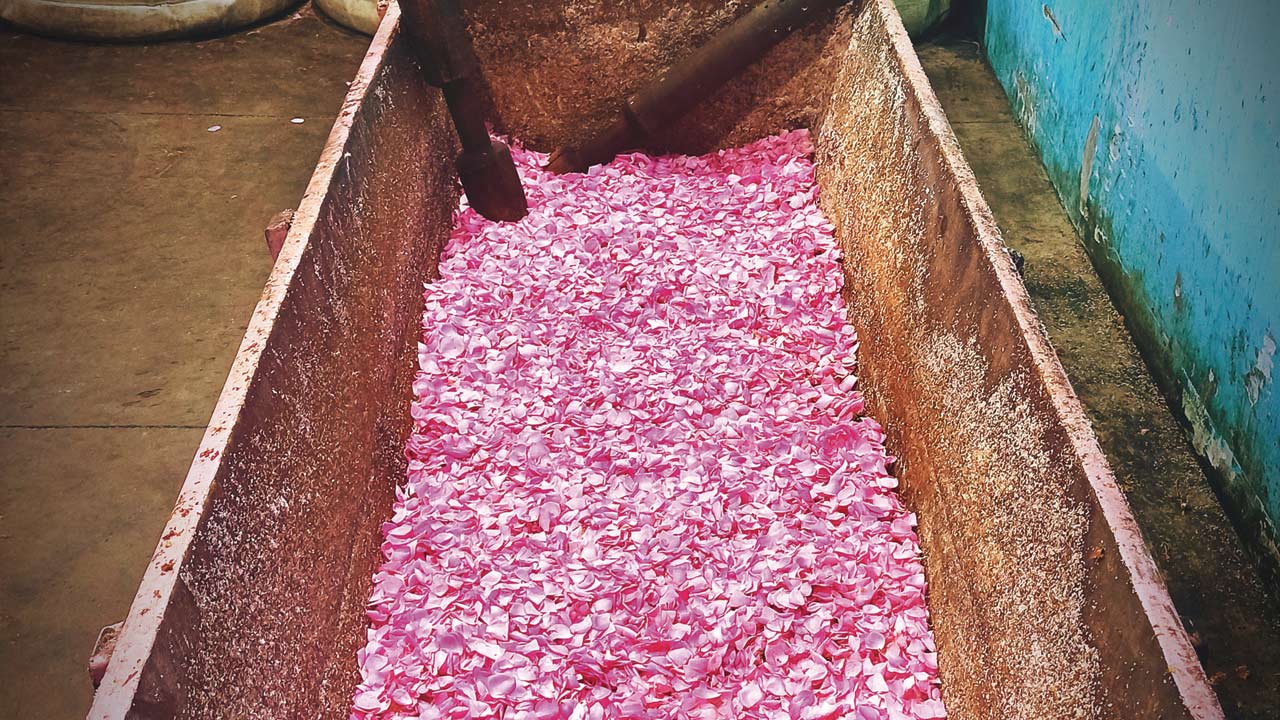
On the outskirts of Kannauj are rose fields where flowers are plucked at sunrise and sent to locals to separate the petals from the shaft. By evening, they are in a workshop to be sifted on a large sieve. The larger petals are pounded with sugar in a mango wood mortar and pestle, ready to be crushed into gulkand
Next, Sashwat takes us to their karkhana where, by 4 pm, the cleaned and plucked petals are collected from the women’s homes and brought to. Here, they are sifted through a large sieve. “Only the larger petals are used for the gulkand,” Shashwat’s father, Satyendra Dubey tells us. “The smaller ones are sent for making gulab jal. The petals are put in a large mango wood mortar and pestle, the size of a bathtub. It’s an ancient technique; the wood soaks in the excess moisture. We mix 60 kilos of sulphur-free sugar with 40 kilos of petals, crushing it all gently until thoroughly mixed. At this stage, the sugar is still granulated. Stored in large containers of 25 kilos each, the sugar melts naturally due to the Sun’s rays, till it forms a semi-dry liquid. This takes up to a month. But the gulkand is ready to eat even on day one, after being thoroughly mixed. Of course, waiting is recommended.”
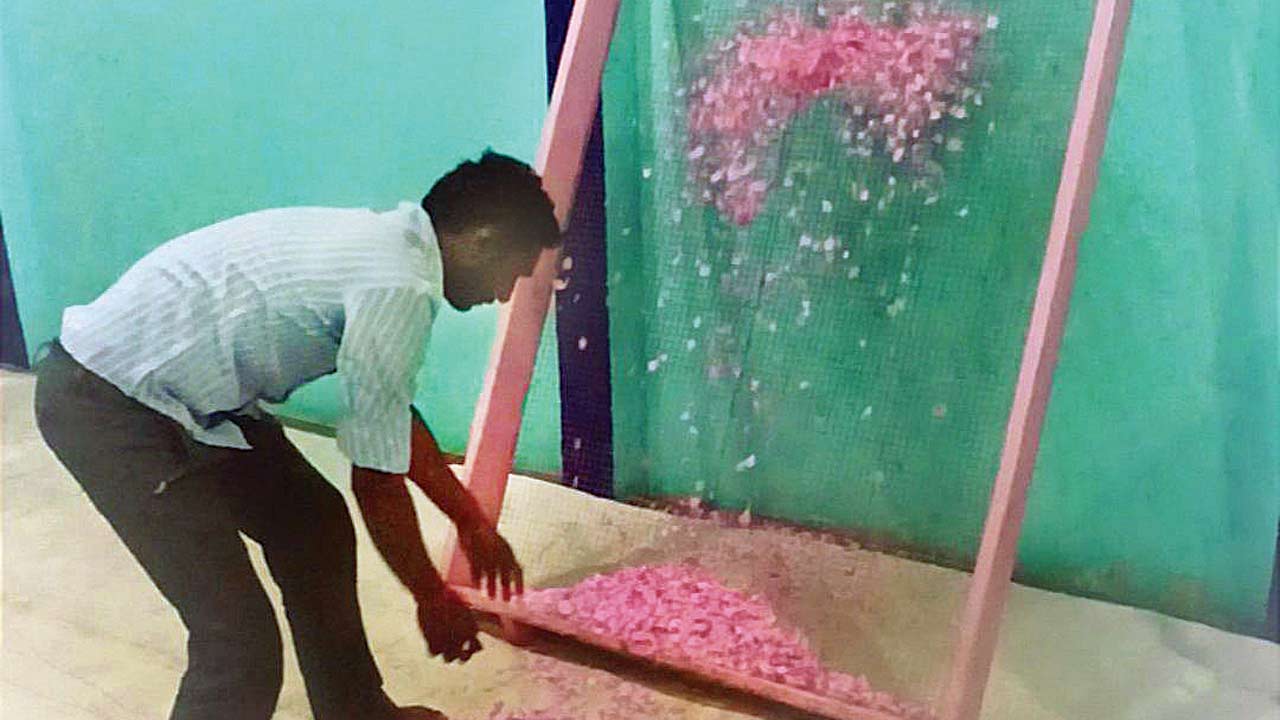
We ask why misri or rock sugar is not used, since it is prescribed in Ayurveda and is considered a healthier option. “When it was prescribed, hundreds of years ago, sulphur-free sugar was not available,” laughs Ashutosh, adding, “To be honest, we do use misri, if it is a client requirement, but commercially, it isn’t a viable option. Misri is expensive and requires crushing before use, which is not possible for larger orders. I am not an expert, but you will see the benefits [of gulkand] even in the sugar variant. It’s all in the head.” He tells us of a factory where workers wear disposable head caps and gloves to ensure hygiene, which hikes up the price of the finished product.
A renowned Ayurvedic brand also sources rose petals from Kannauj, but they transport them on ice slabs to their state-of-the-art processing unit in Haridwar. “The delay kills the benefits,” says Satyendra, who takes pride in his centuries-old process. “Just because a famous yogi is selling it, people buy it. Our lack of awareness and obsession with ‘what’s expensive, must be good’ is making us indifferent to the truth.”
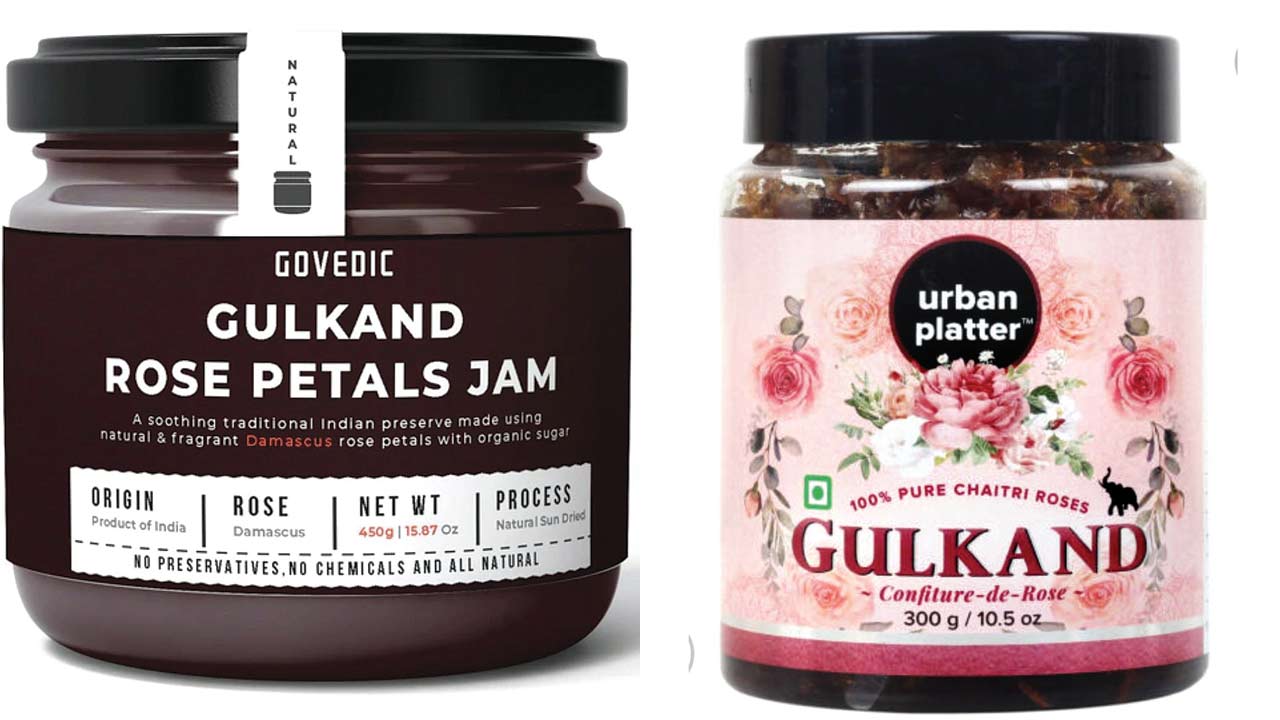
Govedic and Urban Platter
Soliloquy done, we ask him if gulkand is okay for diabetics. “Have a spoonful first thing in the morning and don’t have any liquid for 30 minutes after,” pat comes the reply. “The sugar won’t spike your insulin levels or harm you. It can be refrigerated and stored in an airtight container for a year.” Once consumed on special occasions when a meetha paan ended an Indian meal, the gulkand is suddenly finding place on store shelves in pretty bottles, marketed as a wellness eat. The West has labelled it rose jam, rose petal conserve and confiture-de-rose.
Online gourmet grocery store, Urban Platter, sells natural Himalayan gulkand (Rs 225 for 300gms). Govedic offers an organic gulkand rose petals jam (Rs 400 for 450gms) and Amala Earth has an Ayurvedic gulkand rose petals jam (Rs 599 for 400 gm). However, brands such as Praakritik are giving it an artisanal touch by fortifying gulkand with honey and rock sugar (Rs 310 for 250 gms) or with paan infused flavours (Rs 350 for 250gms). Amala Earth too has a natural kesar-elaichi artisan variant (Rs 338 for 250gm). The roses for these are sourced either from Kannauj or from Pushkar in Rajasthan.

Ashutosh Dubey and Shashwat Dubey
We brought back a kilo for Rs 100. Cheap, right? The same is repackaged and sold in smaller jars with or without fortification, but often with bigger marketing plans, sometimes hiking the price up to Rs 1,000 a kilo.
Perfect for summer, gulkand can be used in sweets, paan and milkshakes. Experts swear by its therapeutic properties and antibacterial, antioxidant, antitussive, antidiabetic and relaxant effects. Because of its cooling properties, it is a great remedy for the reduction of pitta (bile) and heat in the body, alleviating heat-related problems such as fatigue, lethargy, itching, aches and pains. It is also considered to be a remedy for eye inflammation and redness, and for strengthening teeth and gums.
Gulkand goodness
>> Enhances sleep quality
>> Acts as natural coolant
>> Helps clear the skin and reduces acne marks
>> Benefits digestive health and overall wellbeing
>> Reduces stress, and strengthens the heart, and central nervous system.
>> Helps manage a hangover
Pushkar Vs Kannauj
In the alternative medicine circles, the superiority of gulkand from either region is often debated. The gulkand from Kannauj is light pink and sometimes referred to as ‘synthetic’ due to its heady fragrance. The varieties from Pushkar and Ajmer are usually darker, but that is due to the colour of the petals since it’s made from red roses. However, Ashutosh Dubey argues that it does not have the same health benefits, because “the concentration of oil in the Kannauj variant is different from the Pushkar one. The latter is cheaper and hence best used in meetha paan variants. The Kannauj gulkand is used for medicinal purposes, and is sometimes fortified with praval bhasma or coral calx [natural source of calcium] too.”
 Subscribe today by clicking the link and stay updated with the latest news!" Click here!
Subscribe today by clicking the link and stay updated with the latest news!" Click here!







